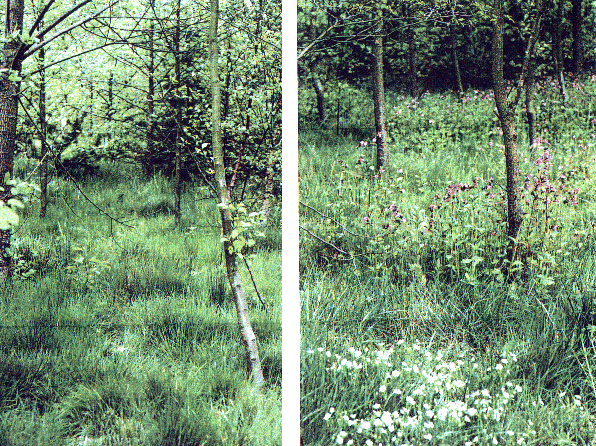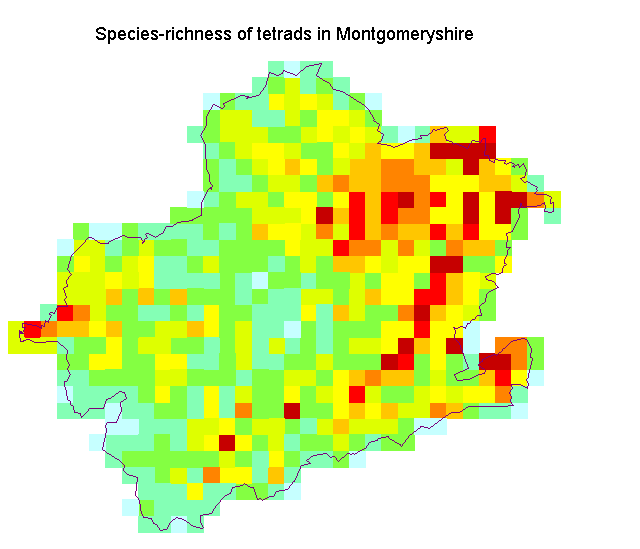Dr Alan J Morton PhD BSc ARCS
Lecturer in Environmental Ecology
Division of Life Sciences and Centre for Environmental Technology
Imperial College, London, 1969 - 2003
Teaching Activities
Subject Areas
- Plant Ecology
- Ecological aspects of Biological Conservation and Habitat Creation
- Soil Science
- Computer Programming
- Quantitative Methodologies and Modelling
Courses
- Undergraduate
- Community Ecology - 3rd year students
- Quantitative Analysis of Plant Communities (Course Convenor) - 3rd year students
- Applied Ecology - 3rd year students
- Relations of Plants to Soil and Microclimate - 3rd year students
- Plant Ecology Field Course (Course Convenor) - 3rd year students
- Terrestrial Ecology Field Course - 3rd year students
- Ecosystems (Course Convenor) - 2nd year students
- Exploitation and Management of Biological Resources - 2nd year students
- Computing in Biology - 2nd year students
- Bryophyte Ecology Field Course - 2nd year students
- Ecology Field Course - 1st year students
- Supervision of undergraduate research projects and dissertations - 3rd year students
- Postgraduate
- Co-Convenor of the Ecological Management Option of the MSc course in Environmental Technology
- Ecological aspects of Biological Conservation and Habitat Creation - a 3-week module based at Silwood Park for Ecological Management Option MSc students
- MSc course in Advanced Methods in Taxonomy and Biodiversity (Computing Module Organizer)
Postgraduate Student Supervision
- PhD Students - 16 students between 1975 - 2003
- MPhil Students - 3 students between 1978 - 1993
- MSc Students - 60 students between 1978 - 2001
Research Activities
Ecological aspects of habitat creation
The main focus of this work has been on the experimental introduction of field layer species into recent woodland plantations. The work is concerned with the population dynamics and performance of the introduced plant species. Woodland edge species and also shade tolerant species, including ancient woodland indicator species, have been introduced into broadleaved plantations of various ages at Milton Keynes and at 3 sites in Berkshire. These have been monitored over several years and the results indicate that many woodland edge species can be introduced successfully by seeding, and most of the ancient woodland species introduced as plants have also established and in many cases have spread. Two new strands of work have been started recently. The first of these is an investigation of the invertebrate communities of broadleaved woodlands which have previously been enhanced by the introduction of woodland field layer species. The earlier studies have shown that plant introductions can often be successful in establishing late-successional woodland vascular plants in new plantations, and the new work is to determine whether this automatically leads to the colonisation by late-successional woodland invertebrates. Another new strand of work is a long-term study of some very recent but extensive woodland creation schemes at Manchester Airport.

Two young broadleaved plantations at Milton Keynes. The one on the left is unenhanced whereas the one on the right has been seeded with field layer species.
Ecological interpretation of plant species distributions
The main component of this work has been an analysis of plant species distribution data from the vice-county of Montgomeryshire, Wales. The data used were tetrad (2km x 2km) data which were analysed by multivariate analysis techniques. The tetrad species-richness and the tetrad groupings detected by these analyses showed very clear geographical trends which were related to altitude, oceanic influence, habitat diversity within tetrads, and the presence of particular features such as the presence of base-rich rocks and the presence of the nationally-important Montgomery Canal.
In parallel with the Montgomeryshire studies, generalised software (DMAP) has been developed for analysing species distribution data and for producing distribution and coincidence maps. In developing the software, the needs of the Montgomeryshire studies have been taken into account, and also those of organizations concerned with distribution studies at national scales, in particular the Biological Records Centre at Monks Wood, and the Finnish Museum of Natural History. The software is currently being used by more than 1000 individuals and organisations throughout Britain and other parts of the world. A substantal Web site (The DMAP Information Pages) has been set up to support the software and also as a more general resource for those involved in biological distribution mapping.

Application of remotely-sensed data to the differentiation and monitoring of moorland plant communities
Landsat and airborne multispectral data have been used in an investigation of methodologies for differentiating ecologically meaningful plant community types in moorland vegetation. The work has drawn attention to the importance of a phenological understanding of the major component species of the communities in selecting suitable imagery for classification and mapping, and in the interpretation of that imagery.

A classified satellite image of the Plynlymon area of Wales. Water bodies are coloured yellow, conifer forest is blue, Improved grassland is red, and moorland is green. Dark green is Calluna-dominated moor,mid green is Nardus grass moor, and light green is Molinia-dominated moor.
Mathematical modelling of population growth of perennial grasses
This work began with a study of the arable weed Elymus repens (Couch-grass) and the effects of various control strategies on population growth. The work was extended with a study of Arrhenatherum elatius, the bulbous form (Onion Couch) of which is an arable weed whilst the non-bulbous form (Tall Oat) is not. The work has more recently proceeded under a Grant awarded under the Joint Agriculture and Environment Programme.
Nutrient circulation in grassland communities
A field experiment was designed to determine the fate of mineral nutrients in a Molinietum grassland at the end of the growing season. This involved the covering of some plots to prevent the loss of nutrients by rainfall leaching in order to distinguish between withdrawal of nutrients from leaves by the plant and loss of nutrients by leaching. The results demonstrated very clearly that, during the autumn senescence, large quantities (about 75%) of nitrogen and phosphorus were withdrawn and retained by the plant before senescence, whereas the majority (about 90%) of potassium, calcium and magnesium were lost by the plant to leaching. In a completely separate study, a modelling approach was used to simulate mineral nutrient flow from an inselberg in south-west Nigeria and investigate the possible nutrient enrichment of the area surrounding the inselberg.
Selected Publications:
Francis, Joanna L. & Morton, Alan (2001) Enhancement of ammenity-woodland field layers in Milton Keynes. British Wildlife, 244-251.
Ashmore, M.R., Thwaites, R.H., Ainsworth, N., Cousins, D.A., Power, S.A. & Morton, A.J. (1995) Effects of ozone on calcareous grassland communities. Water, Air and Soil Pollution 85, 1527-1532.
Morton, A.J. & Trueman, I.C. (1995) Analysis and Interpretation of Plant Distribution Data; Chapter 11 in: The Flora of Montgomeryshire. Edited by Trueman, I.C., Morton, A.J. & Wainwright, M. Montgomeryshire Field Society & Montgomeryshire Wildlife Trust Welshpool, U.K. ISBN: 0 9526715 0 6.
Trueman, I.C., Morton, A.J. & Wainwright, M. (Eds.) (1995) The Flora of Montgomeryshire. Montgomeryshire Field Society & Montgomeryshire Wildlife Trust Welshpool, U.K. ISBN: 0 9526715 0 6.
Francis, J.L. & Morton, A.J. (1995). Restoring the woodland field layer in young plantations and new woodlands. Pp 1-13 in: Restoration Ecology in Europe, Eds. Urbanska, K.M. & Grodzinska, K. Geobotanical Institute SFIT Zurich. ISBN: 3-9520794-0-5.
Khan, A.U. & Morton, A.J. (1994) A comparative study of growth stategies in two varieties of Arrhenatherum elatius. Vegetatio 112, 181-187.
Morton, A.J. (1994) The Land Cover of Glamorgan - A Satellite Image. In: Flora of Glamorgan, Ed. by Wade, A.E., Kay, Q.O.N. & Ellis, R.G.. HMSO.
Francis, J.L., Morton, A.J. & Boorman, L.A. (1992) The establishment of ground flora species in recently planted woodland. Aspects of Applied Biology 29, 171-178.
Khan, A.U. & Morton, A.J. Agro-ecology of onion couch (Arrhenatherum elatius var. bulbosum (Willd.)). II. Competitiveness of Onion Couch in the crop situation, and how it influences development of onion couch and crop. Annals of Applied Biology 118, (1991), 651-662.
Isichei, A.O., Morton, A.J. & Ekeleme, F. (1990), Mineral nutrient flow from an inselberg in south-western Nigeria. Journal of Tropical Ecology 6, 479-491.
Down, C.G. & Morton, A.J. (1989). A case study of whole woodland transplanting. In: Biological Habitat Reconstruction. Ed. by G.P. Buckley. (Belhaven Press), 251-257.
Morton, A.J. (1986). Moorland plant community recognition using Landsat MSS data. Remote Sensing Environment 20, 291-298.
Goldsmith, F.B., Harrison, C.M. & Morton, A.J. (1985) Description and analysis of vegetation. In: Methods in Plant Ecology. Ed. by P.D. Moore. (Blackwells), 437-524.
Alcock, M.R. & Morton, A.J. (1985) The nutrient content of throughfall and stem-flow in woodland recently established on heathland. Journal of Ecology 73, 625-632.
Morton, A.J. (1985). Satellite imagery and biological conservation. Naturopa 48. Council of Europe, Strasbourg.
Morton, A.J. & Obot, E.A. (1984) The control of Echinochloa stagnina (Retz.). P. Beauv. by harvesting for dry season livestock fodder in Lake Kainji, Nigeria - a modelling approach. Journal of Applied Ecology 21, 687-694.
Alcock, M.R. & Morton, A.J. (1981) The sulphur content and pH of rainfall and of throughfalls under Pine and Birch. Journal of Applied Ecology 18, 835-839.
Gash, J.H.C. & Morton, A.J. (1978) An application of the Rutter Model to the estimation of the interception loss from Thetford Forest. Journal of Hydrology 38, 49-58.
Morton, A.J. (1977). Mineral nutrient pathways in a Molinietum in autumn and winter. Journal of Ecology 65, 983-999.
Rutter, A.J. & Morton, A.J. (1977), A predictive model of rainfall interception in forests. III. Responses of the model to varying stand characters and different climatic conditions. Journal of Applied Ecology 14, 567-88.
Hall, J.B., Morton, A.J. & Hooper, S.S. (1976), Application of principal components analyses with constant character number in a study of the Bulbostylis/Fimbristylis (Cyperceae) complex in Nigeria. Botanical Journal of the Linnean Society 73, 333-54.
Morton, A.J. (1974), Ecological studies of a fixed dune grassland at Newborough Warren, Anglesey. I. The structure of the grassland. II. Causal factors of the grassland structure. Journal of Ecology 62, 253-78.
Morton, A.J. (1970). A Study of Some Factors Affecting the Structure of
Grassland Vegetation. Ph.D. Thesis, University of Wales.
Rieley, J.O., Machin, D. & Morton, A. (1969), The measurement of climatic factors under a vegetation canopy - a reappraisal of Wilm's method. Journal of Ecology 57, 101-8.




